Take a moment to imagine yourself in the Temple of Jerusalem on the day Mary and Joseph came to present the Child Jesus to the Lord.
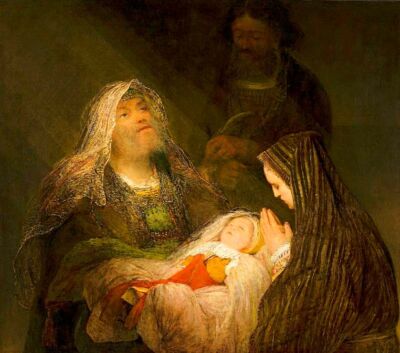 It would have been a sensory overload: the sounds of the sacrifices taking place on the altar that day, the smell of the incense being offered, and a sheer sense of wonder as you beheld the largest and most ornate building you had ever seen.
It would have been a sensory overload: the sounds of the sacrifices taking place on the altar that day, the smell of the incense being offered, and a sheer sense of wonder as you beheld the largest and most ornate building you had ever seen.
And you might have noticed an old man whose face was aglow with joy as he approached a young couple who had come there with a newborn baby. His name was Simeon, and despite the great number of people in the Temple that day, the old man focused exclusively on that boy.
When he greeted the parents, he told them an amazing thing. He had been led to them by the Holy Spirit of God who had signaled to the old man that he would not die before seeing the Messiah with his own eyes.
It was a miraculous moment. Who ever heard of such a thing?! It’s as if God had orchestrated this encounter in the Temple to reaffirm for the couple the message of the Archangel Gabriel about the identity of this Child:
“He will be great and will be called Son of the Most High, and the Lord God will give him the throne of David his father, and he will rule over the house of Jacob forever, and of his kingdom there will be no end” (Lk 1:33)
Then, as the old man took the Child into his arms, he shed tears and cried out in astonishment and joy:
Now, Lord, you may let your servant go in peace for I have seen your salvation…the light of the nations…and the glory of your people, Israel! (Lk 2:29-32)
Most people standing nearby might have dismissed the old man’s drama as the exuberance of a grandfather in the presence of a baby, but Simeon’s reaction was more than that. Simeon saw something that no one else saw. He saw the infant Messiah with the expectant eyes of all the wise men of Israel.
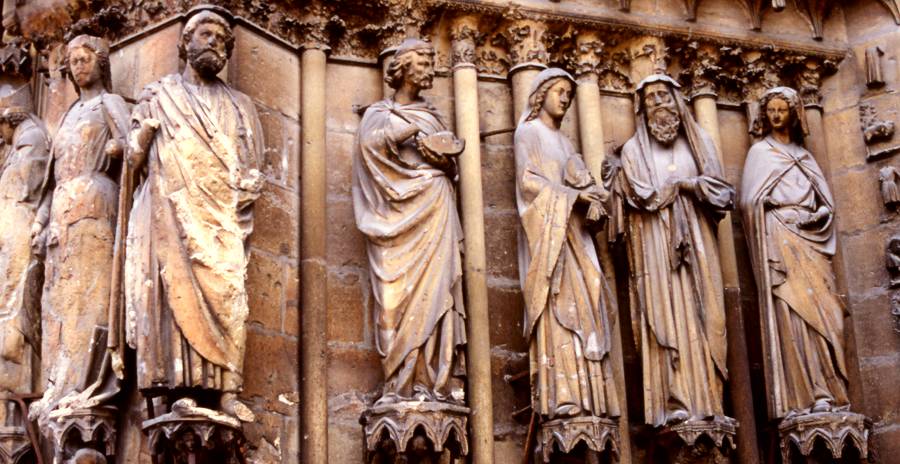
Saints of the Old and New Testaments, Reims Cathedral
The Wise Man
I have a theory about this spectacle. I believe Simeon was prepared for his encounter with the Christ Child that day because he was fully immersed in the Wisdom literature of Israel.
How do I come to that conclusion? Well, wisdom flows out of him, as if his very thought patterns were formed by the Scriptures. In so few words, Simeon spoke of the Holy Spirit and salvation, and light, and the glory of Israel. He even hinted at the salvation of the pagan nations. These are all themes of the Wisdom writers of the Bible, and I’ll detail of few of them below.
Because of that, Simeon did not just see a young family coming to dedicate a child: He saw Wisdom Himself entering into His own Temple with humility and glory. Of all the people in the Temple that day, only he and the prophetess Anna recognized this Child as Israel’s long-awaited Messiah. Anna was the symbol of all the holy women of Israel who longed for their King.
And that’s what the Wisdom literature of the Old Testament does to someone who reads it on a regular basis. It opens your eyes. It makes you docile to the Holy Spirit, and it prepares you for a direct encounter with Jesus.
Wisdom for our Souls
There are seven books of Wisdom literature in the Old Testament. One of the books is actually named Wisdom!
The Wisdom books are a distinct bloc of literature situated in the middle of the Old Testament. The Catholic Bible organizes the 46 books of the Old Testament into 4 sections:

It’s a pretty neat and logical arrangement, isn’t it?
With exception of Job and Psalms, all of the Wisdom writings are alleged to have been written by King Solomon, who is considered the wisest man in the history of Israel—that is, until he went off the deep end with his hundreds of pagan wives (1 Kgs 11; definitely not good), but we’ll gloss over that little detail for the moment.
The diversity of styles makes it unlikely that one man wrote all the books, but Solomon gets credit anyway, just as David gets credit for all the psalms. These kings are the authorities and symbolic authors of all the writing.
More importantly, the Wisdom books stand at the very heart of the Old Testament message. In fact, if you pick up any Catholic Bible and randomly open it to the middle, you will find yourself in one of the Wisdom books, most likely the Psalms, which also happens to be the longest book of the Bible!
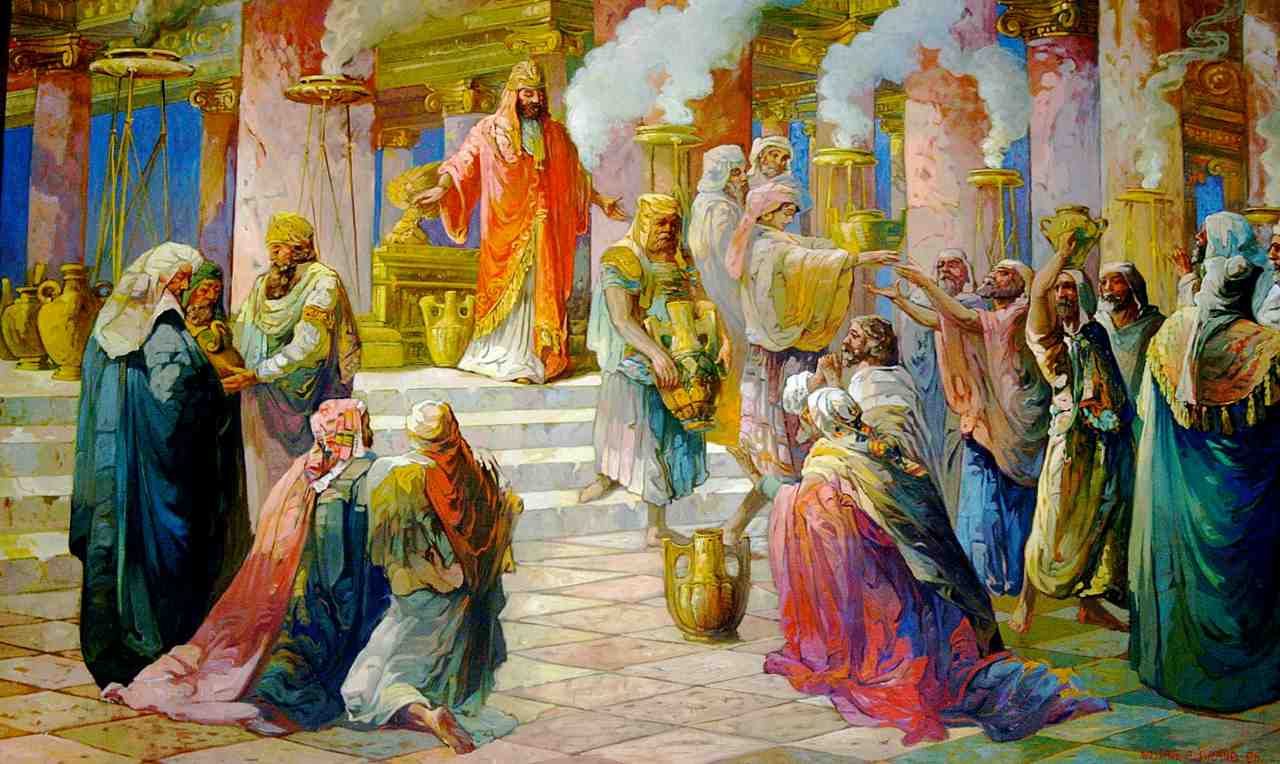
King Solomon Receives the Queen of Sheba, by Gustav Brand, early 20C
Training in Righteousness
If the Law, the History, and the Prophets highlight the infidelities of the people of Israel, the Wisdom books highlight the people’s fidelity, their holiness, their prayerfulness. This is why Simeon and Anna are radiant symbols of the ancient wisdom of the Chosen People recognizing their moment of visitation from on high.
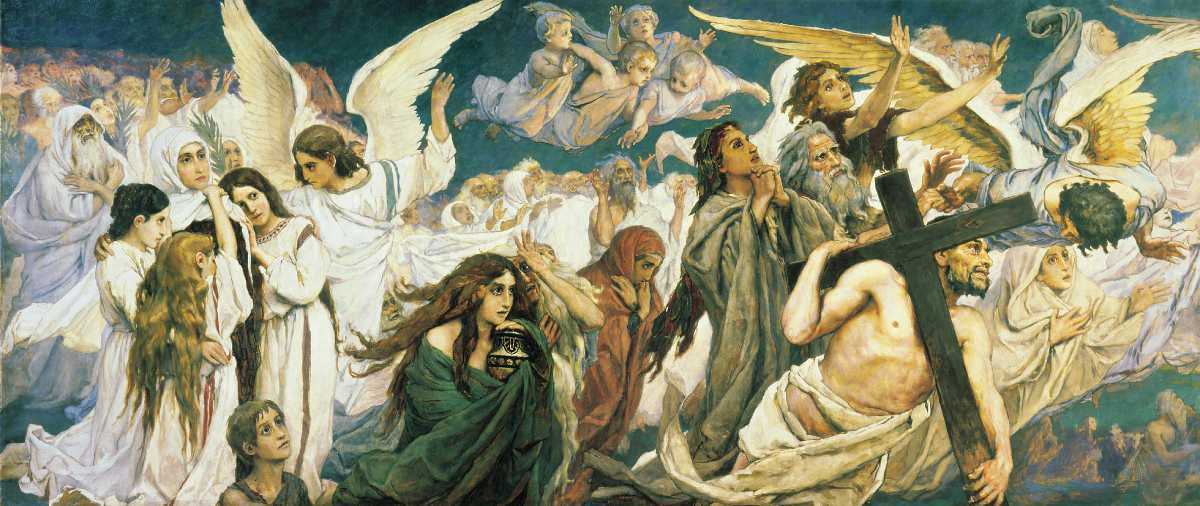
The Joy of the Righteous before the Lord, by Viktor Vasnetsov, 1889
The whole purpose of the Wisdom literature was in fact to teach and train Israel in virtue, which could be summed up in one great biblical word: “righteousness”. When we read any part of this literature, we get the sense that we are sitting at the feet of a wise rabbi teaching us about the way to live correctly in this world.
The Christian interpretation of this body of literature also highlights another aspect which we believe was willed by God: they are preparation for the message of the Gospel, the teaching of Wisdom Himself.
Magnificent Literature
Wisdom books are not comprised of laws, stories, or prophecies as such. The majority of them contain practical and spiritual teachings in the form of wise sayings. But there are also a few twists in the diversity of ways they get the message of salvation across to the reader. For example:
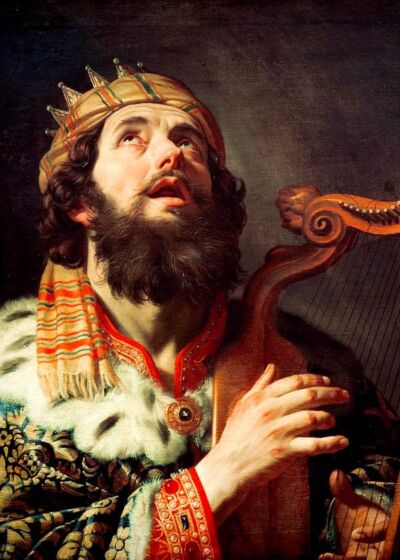 The 150 psalms are all poetry and prayers with lots of wisdom themes woven throughout. This longest book of the Bible also contains the longest single chapter in Psalm 119, which runs to 176 verses!
The 150 psalms are all poetry and prayers with lots of wisdom themes woven throughout. This longest book of the Bible also contains the longest single chapter in Psalm 119, which runs to 176 verses!- Proverbs are just what they claim to be, a whole collection of aphorisms for life; Sirach has the same character of multi-faceted advice-giving by an experienced sage of Israel.
- The Song of Songs is an elaborate parable in the form of an extended love poem! It was the only book St. Thomas Aquinas wanted read out loud to him on his deathbed, because it speaks so movingly of the love of the human soul for its creator.
- Ecclesiastes is a pessimistic book full of warnings about the “vanity of vanities” of this world but it also has some of the most sublime messages of the Bible for living a holy life.
- And the Book of Job is presented as an extended dialogue (like a Broadway play featuring antagonistic friends, self-reproaches, and God, who shows up miraculously at the end. Much later, it was actually turned into a Broadway play by Archibald MacLeish.) Everyone knows the trials and tribulations of poor Job, which become an early image of the sufferings of the Savior to come.
The Catholic Church has always considered these seven books to be inspired and canonical scripture because they were in common use for centuries by the Jews and read in the Christian liturgy since the beginning of the Church.
Parallels and Preparations
It would be impossible to do an adequate survey of the parallels of Wisdom literature with the message of the New Testament, but I thought it would be good to highlight a few that should immediately strike the Christian reader as a kind of foretaste of the Gospel.
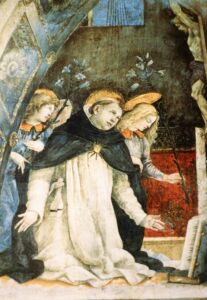 I’ve left the Psalms out of this list because Psalms is the Old Testament book most quoted in the New Testament, so it’s an article all in itself. I also can’t do justice to the Book of Proverbs which is so full of familiar aphorisms it would be hard to condense down to a few.
I’ve left the Psalms out of this list because Psalms is the Old Testament book most quoted in the New Testament, so it’s an article all in itself. I also can’t do justice to the Book of Proverbs which is so full of familiar aphorisms it would be hard to condense down to a few.
Let me start with the Song of Songs, which contains a number of phrases that have been applied to the Virgin Mary throughout the ages. Then I will list numerous others from Wisdom literature to give you a sense of how central they are to our faith.
Songs 4:12
“A garden enclosed, my sister, my bride, a garden enclosed, a fountain sealed!” (Mary is often referred to by the Christian Tradition as an “enclosed garden” or hortus conclusus in Latin.)
Songs 6:1
“Most beautiful among women.” (Mary is Tota Pulchra in the Christian Tradition.)
Eccl 1:2
“Vanity of vanities, all things are vanity…” (This accurate assessment of the things of this world hardly needs comment.)
Eccl 3:1-8
“To everything there is a season”; or, if you are the ’60s rock band, The Byrds, “To everything turn, turn, turn, there is a season, turn, turn, turn.” Now you’ll have  that song fixed in your mind for the rest of the day. You’ll have to blame Ecclesiastes.
that song fixed in your mind for the rest of the day. You’ll have to blame Ecclesiastes.
Wis 3:1-10
“The souls of the just are in the hand of God, and no torment shall touch them.” (This is probably the reading most often read at Catholic funerals.)
Wis 2:12-20
“Let us beset the just man because he is obnoxious to us….” (This passage anticipates, almost verbatim, the words of the Pharisees at the Crucifixion scene, Mt 27: 43)
Job 19:25
“I know that my Redeemer lives…” (Anticipating the Resurrection). And of course we can’t forget the familiar phrase, “The patience of Job.”
Wis 8:7
“[Wisdom] teaches moderation and prudence, righteousness and fortitude, and nothing in life is more useful than these.” (This is the source of the Christian teaching on the Cardinal Virtues.)
Wis 16:20
“You nourished your people with food of angels and furnished them bread from heaven” (Any Catholic would recognize this as a clear anticipation of the Eucharist).
Sir 2:1
“My son, when you come to serve the Lord, prepare yourself for trials” (This is easily my favorite verse of the whole Old Testament! It echoes the teachings of Jesus about taking up one’s cross, Mt 16: 24; Mk 8: 34.)
Sir 35:6
“Do not appear before the Lord empty-handed…” (Anticipating the Christian ethic of stewardship, fruitfulness, and accountability.)
Divine Wisdom
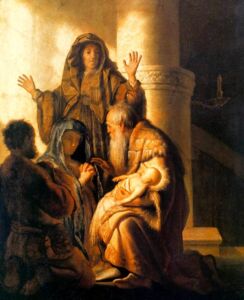 Hopefully this brief survey will motivate each of us to drink deeply of the Wisdom books on a regular basis. They are inexhaustible springs of righteousness. And, there’s a great payoff for us.
Hopefully this brief survey will motivate each of us to drink deeply of the Wisdom books on a regular basis. They are inexhaustible springs of righteousness. And, there’s a great payoff for us.
Simeon and Anna and Mary and Joseph and all the Apostles had absorbed the wisdom writings of Israel in the depths of their hearts, so they recognized the Messiah when He came. The same holds true for us today.
Nor should we be surprised that God should have scattered these shards of light throughout the Old Testament. They are not ends in themselves. Like Simeon, they simply prepare us for that personal encounter with Incarnate Wisdom Himself in the Temple of His Church.
———-
Photo Credits:
Feature: Gutenberg Bible, NY Public Library (Kevin Eng); Other images via Wikimedia: Torah Scroll Writing (Liran1977); Job Rebuked by his Friends (William Blake, Public domain); King David (Gerard van Honthorst, Public domain); King Solomon in Temple (Frumious Bander); Simeon and Anna (Rembrandt, Public domain); Statues Reims Cathedral (Jim Womack and Anne Richardson); Thomas Aquinas with Angels (Filippino Lippi, Public domain); Simeon’s Song of Praise (Arent de Gelder, Public domain); Vasnetsov Joy of the Righteous (Shakko, Sofia Bagdasarova).
[Note: This article is a reproduction of the Sacred Windows Email Newsletter of 6/29/25. Please visit our Newsletter Archives.]

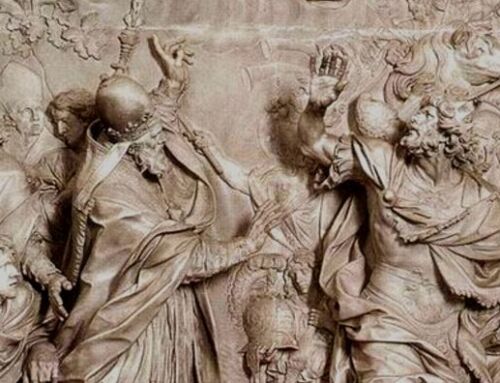

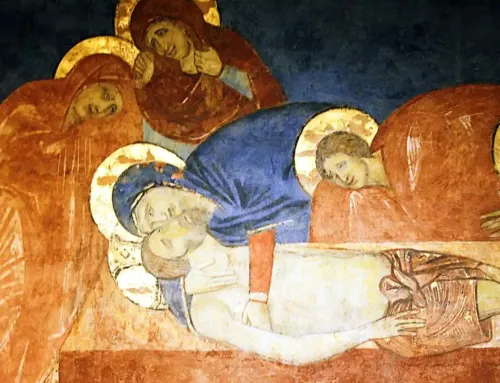
Leave A Comment